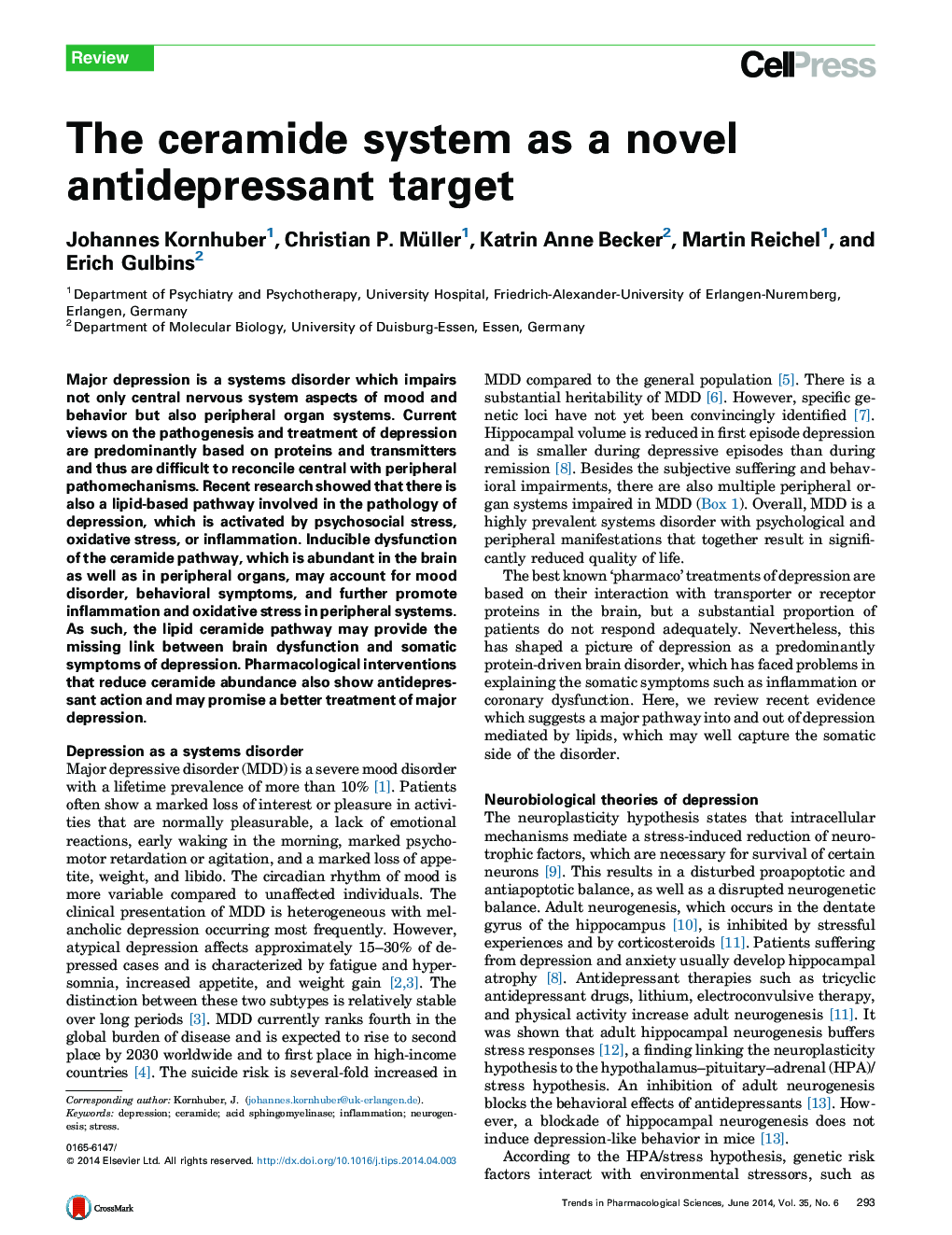| Article ID | Journal | Published Year | Pages | File Type |
|---|---|---|---|---|
| 2572561 | Trends in Pharmacological Sciences | 2014 | 12 Pages |
•Depression is a systems disorder including mood, behavioral, and peripheral somatic disturbances.•Ceramide is a crucial constituent of biological membranes and signaling lipid in all cells.•Brain ceramide controls hippocampal neurogenesis and depression-like behavior in animal models.•The acid sphingomyelinase/ceramide system mediates effects of antidepressant drugs.•Ceramide links brain dysfunction and somatic disturbances in major depressive disorder.
Major depression is a systems disorder which impairs not only central nervous system aspects of mood and behavior but also peripheral organ systems. Current views on the pathogenesis and treatment of depression are predominantly based on proteins and transmitters and thus are difficult to reconcile central with peripheral pathomechanisms. Recent research showed that there is also a lipid-based pathway involved in the pathology of depression, which is activated by psychosocial stress, oxidative stress, or inflammation. Inducible dysfunction of the ceramide pathway, which is abundant in the brain as well as in peripheral organs, may account for mood disorder, behavioral symptoms, and further promote inflammation and oxidative stress in peripheral systems. As such, the lipid ceramide pathway may provide the missing link between brain dysfunction and somatic symptoms of depression. Pharmacological interventions that reduce ceramide abundance also show antidepressant action and may promise a better treatment of major depression.
